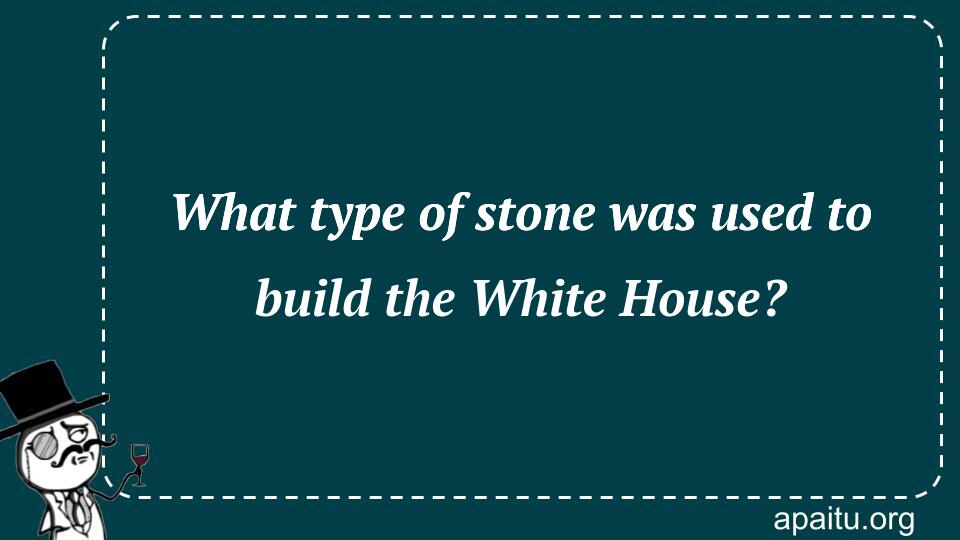Question
Here is the question : WHAT TYPE OF STONE WAS USED TO BUILD THE WHITE HOUSE?
Option
Here is the option for the question :
- Sandstone
- Limestone
- Granite
- Slate
The Answer:
And, the answer for the the question is :
Explanation:
The exterior of the White House was built of sandstone, the majority of which came from the Aquia Creek quarry on Government Island in Virginia’s Potomac River. Pierre Charles L’Enfant bought the quarry in 1791 and collected sandstone until 1799. The same Aquia Creek sandstone was also utilised to construct sections of the United States Capitol and George Washington’s Mount Vernon mansion. Government Island’s quarry is now a park, and visitors may still see chisel marks on the remaining stone.

Welcome to this informative article where we’ll explore the type of stone that was used to build the iconic White House in the United States. The White House, located in Washington, D.C., serves as the official residence and workplace of the President of the United States. In this article, we’ll delve into the details of the stone used in the construction of this historic building, and that stone is sandstone.
Sandstone, a sedimentary rock composed mainly of sand-sized minerals or rock grains, was the primary material used in the construction of the White House. The sandstone used is a type known as Aquia Creek sandstone, named after the Aquia Creek quarries in Virginia, where it was sourced. This particular sandstone is characterized by its pale gray to light tan coloration and its durability, making it an ideal choice for building purposes.
The use of sandstone in the construction of the White House dates back to the late 18th century when the building’s construction began. The original design and construction of the White House were overseen by architect James Hoban, who incorporated elements of Neoclassical and Palladian architectural styles. The sandstone blocks were carefully quarried, shaped, and transported to the construction site to be assembled into the iconic structure we see today.
The choice of sandstone for the White House was not only influenced by its aesthetic appeal but also its practical qualities. Sandstone is a relatively soft and workable stone, allowing for intricate carving and detailing. It is also durable and weather-resistant, making it suitable for enduring the elements over time. These qualities ensured that the White House would stand as a symbol of strength and permanence for generations to come.
The use of sandstone in the White House’s construction is evident in the building’s exterior facade. The walls feature rows of sandstone blocks meticulously laid in a pattern known as ashlar construction. This method involves precisely cut and fitted stones arranged in horizontal layers, creating a uniform and polished appearance. The sandstone blocks give the White House its distinctive appearance and contribute to its architectural grandeur.
Over the years, the White House has undergone various renovations and expansions, but the use of sandstone has remained a consistent element. The durability of sandstone has allowed the building to withstand the test of time and retain its original charm. Today, the White House stands as an enduring symbol of American democracy and a testament to the craftsmanship and artistry of its builders.
Sandstone’s significance extends beyond the White House, as it has been used in the construction of numerous other notable buildings worldwide. Its natural beauty, versatility, and durability have made it a favored material for architectural projects throughout history. From ancient temples to modern structures, sandstone continues to be appreciated for its aesthetic appeal and practicality.
the White House, the iconic residence of the President of the United States, was built using sandstone. The use of Aquia Creek sandstone in the construction of the White House provides the building with its distinctive appearance and durability. Sandstone’s aesthetic appeal, workability, and weather-resistant qualities made it an ideal choice for constructing this historic structure. The White House stands as a testament to the enduring beauty and strength of sandstone and serves as a symbol of American democracy and resilience.